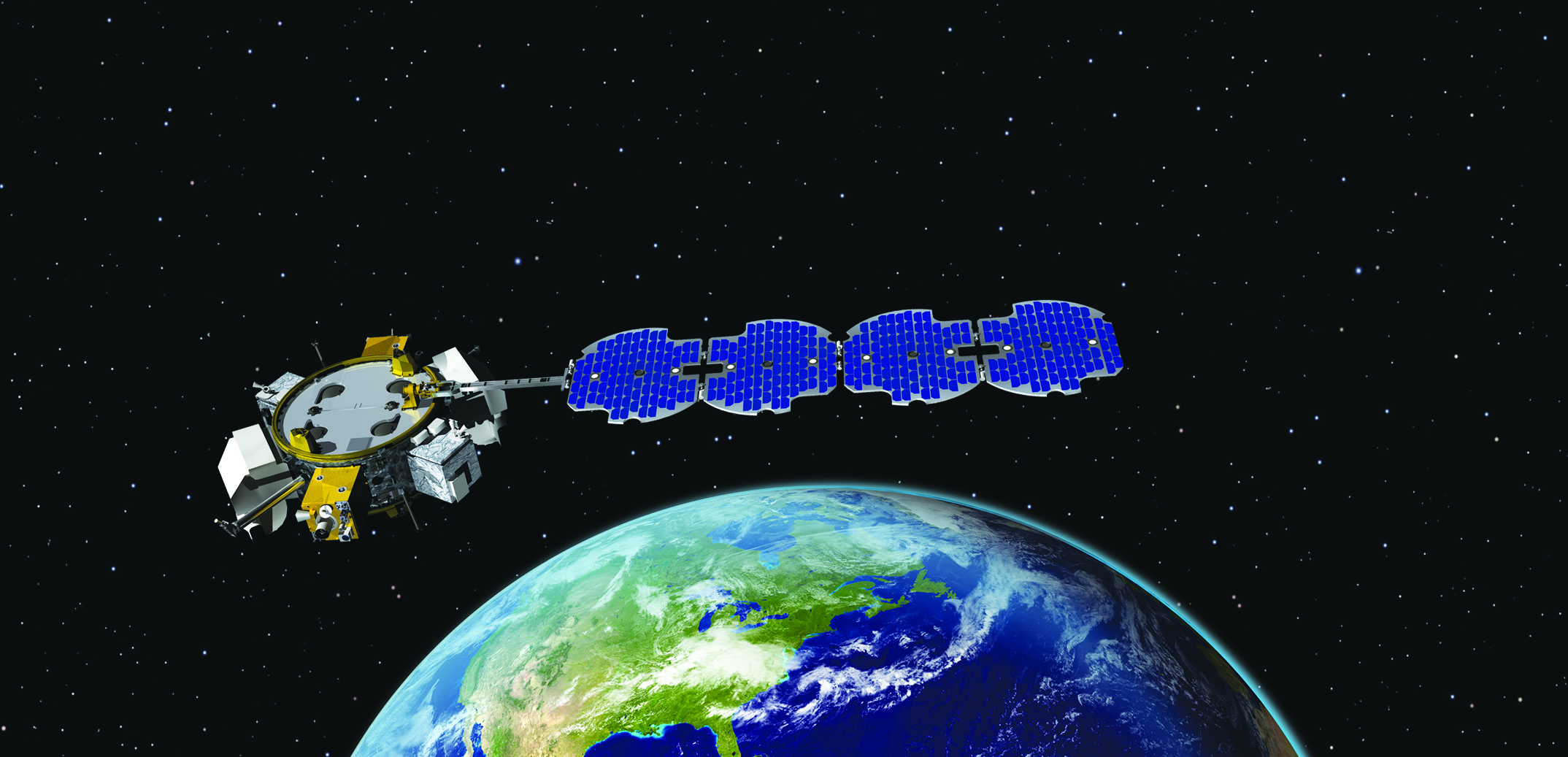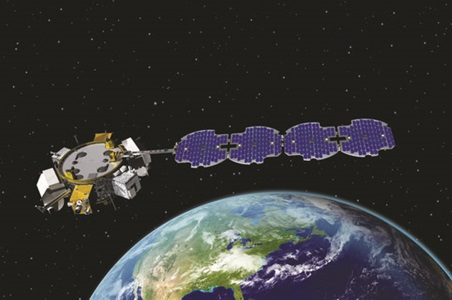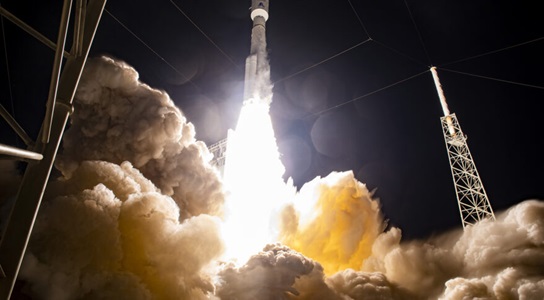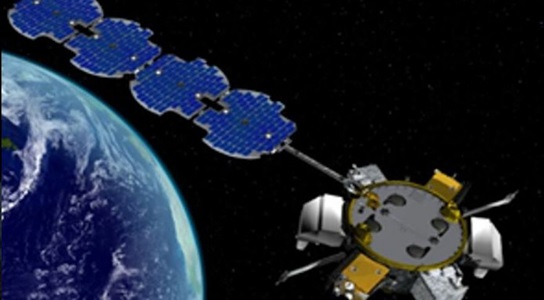Mission launched onboard a United Launch Alliance Atlas V rocket
ESPAStar™: A Freight Train to Space

By Kelly McSweeney
Thousands of satellites orbit Earth for a variety of missions. They carry scientific instruments, cameras, telescopes, sensors or other hardware. Getting these satellites into space requires a spacecraft “bus” to hold the payload, provide propulsion and power to the satellite, and allow it to communicate with controllers on earth. Traditionally, these buses must be tailored to each mission, a process that can be time consuming and expensive.
Northrop Grumman's ESPAStar product line solves this problem by providing a modular and cost-effective spacecraft bus. Now, instead of building a spacecraft around a mission, customers can do the opposite and build a mission around a commercially available spacecraft bus. Furthermore, with its customized adapter ring, the ESPAStar platform enables secondary payloads to tag along with other missions, utilizing extra available space on launch vehicles.
While the ESPAStar primarily is intended to serve very short procurement cycles, it can handle much bigger payloads, utilizing a ring of six payload ports. With more modular customization comes more reliability, more flexibility and more capacity, making the ESPAStar a veritable “freight train to space,”according to Col. Heather Bogstie, senior materiel leader of rapid development for innovation and prototyping at the U.S. Space Force’s Space and Missile Systems Center.
Hitching a Ride to the Galaxy
The ESPAStar spacecraft bus is the building block for a diverse array of programs currently under contract, with important missions that serve national security, ranging from situational awareness to communication, navigation and classified efforts.
“National and space security missions are critical for the prosperity and safety of our country. The ESPAStar bus provides a standard capability that enables our customers to focus on that mission,” said Zeina Barrett, program director for space vehicles at Northop Grumman.
For example, the technologically advanced buses are often used as research laboratories in space. In fact, an ESPAStar bus will host the Navigation Technology Satellite-3 (NTS-3) mission for the Air Force Research Laboratory to augment space-based position, navigation and timing for warfighters.
Now, crucial missions like this one, that would have required a specialized vehicle built over several years, can instead be attached to a more reliable, flexible, and affordable ride to space.


